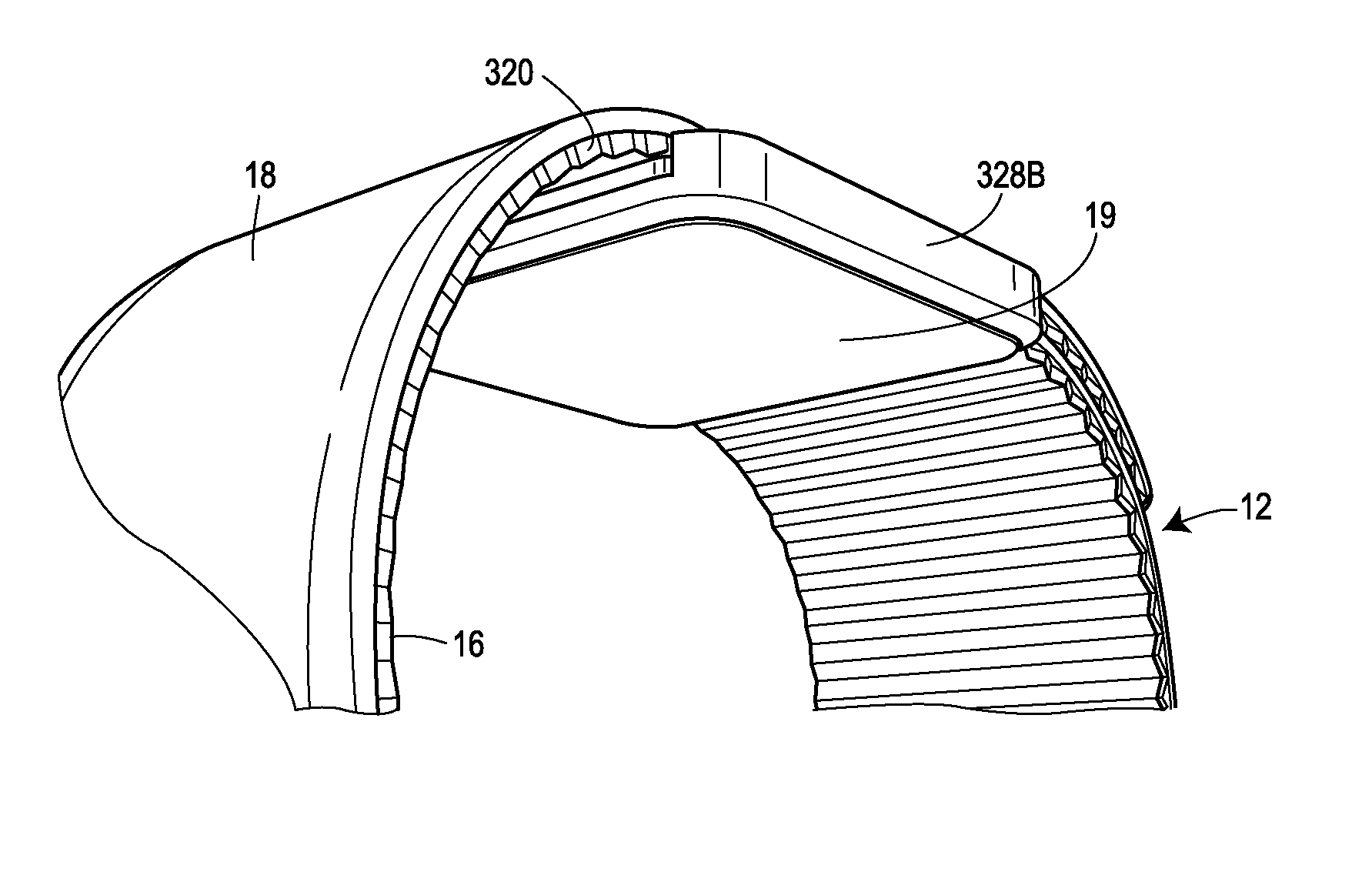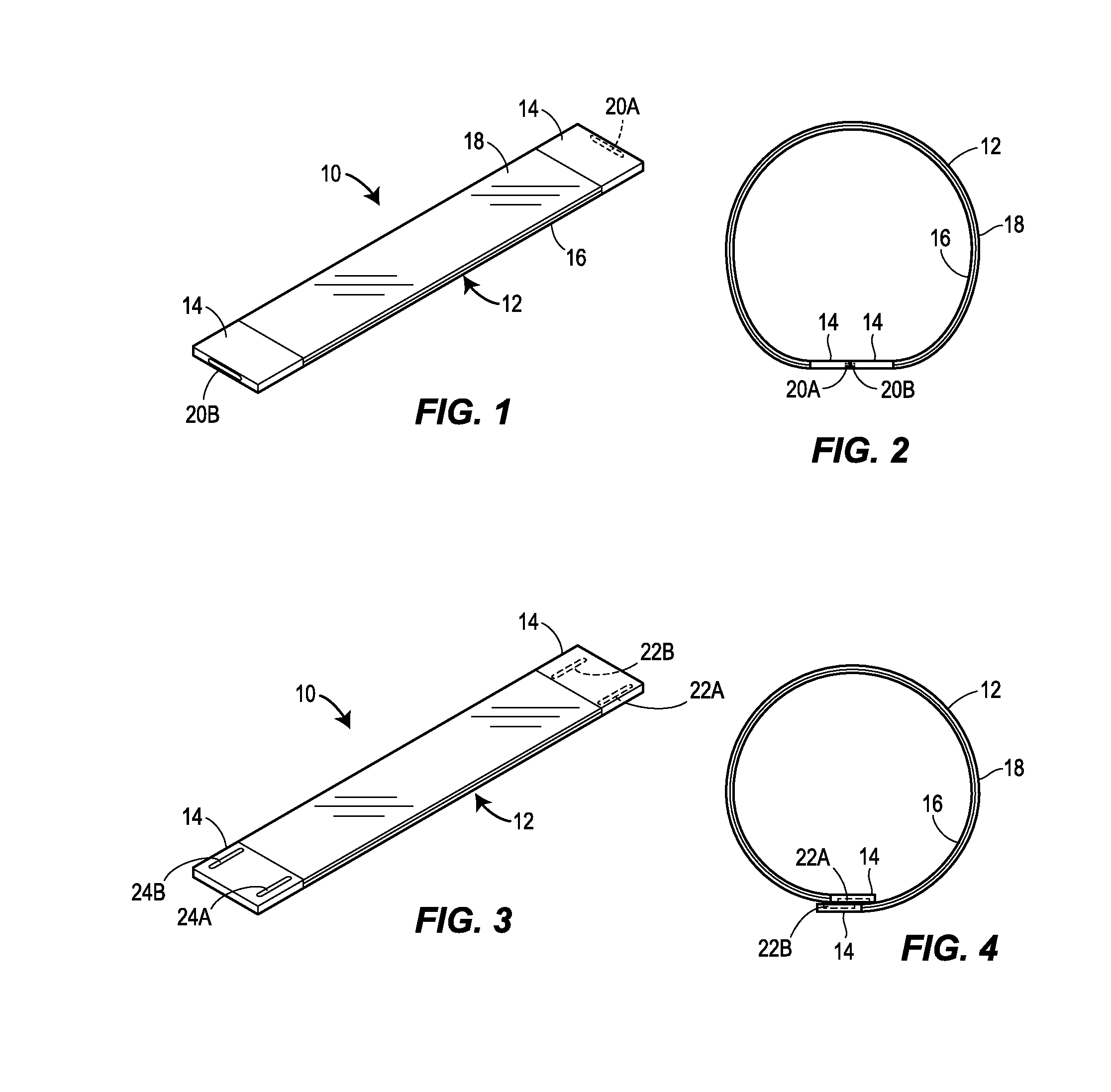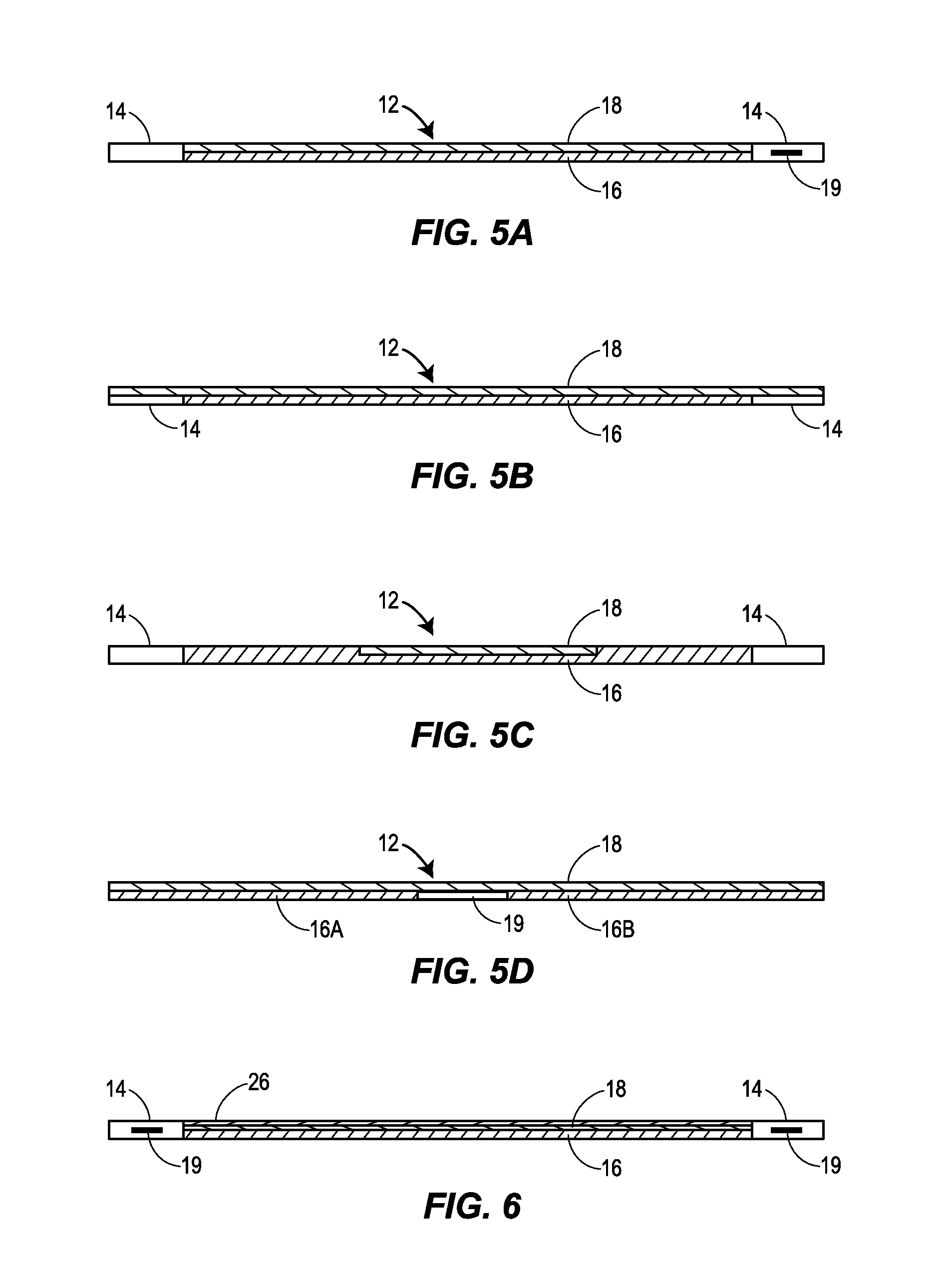However, unfortunately, typical mobile devices such as smart phones have electronic displays that are flat and rigid in nature.
Thus, while these displays are useful in implementing many different applications, the device on which the display is present must still typically be held in a hand, or must be stored in a pocket, a purse, a briefcase or other container, which makes the electronic device less accessible in many situations, such as when a person is carrying other items, undertaking an athletic activity such as running, walking, etc.
Moreover, in many cases these traditional electronic devices require two free hands to hold and operate, making these devices cumbersome or difficult to use or to view in situations in which, for example, a person has only one or no free hands or is otherwise occupied.
While flexible displays are generally known and are starting to come into more common usage, flexible displays have not been widely incorporated into easily portable items such as items of clothing, wristbands, jewelry, etc., or on items that are easily attached to other items, much less in a manner that makes the display more useable and visible to the user in many different scenarios.
The strain profile created by the curvature of bending of the component, as well as any built-in strains that may exist within the component, may, in turn, cause one or more of the
layers of the flexible electronic component to buckle, crack, or otherwise become damaged.
The brittle, inorganic
layers in a flexible electronic component can, however, only typically withstand strains of approximately 1% before buckling or
cracking, depending of course on the
processing conditions of the component.
As such, the brittle
layers of the flexible electronic component generally buckle or crack first in response to excess strain.
The problem with attaching a flexible electronic display to a mechanical support structure, such as, for example, a
metal leaf spring, is that the attachment of the mechanical support structure to the display typically causes the
neutral plane to shift from its initial position (in the display) to a position within the mechanical support structure.
Because of the relationship between the location of the
neutral plane and the minimum bending
radius, shifting the
neutral plane in this way significantly increases the minimum bending
radius of the layers in the display, particularly the brittle layers in the display.
Moreover, these mechanical support structures, and other known mechanical support structures, do not sufficiently protect the flexible electronic component to which they are attached.
Specifically, known mechanical support structures do not sufficiently limit bending of the flexible electronic component, or portions thereof, such that a user of the flexible electronic component can bend or flex the display beyond its minimum bending
radius, bend or flex the flexible electronic component in more than one direction, and / or cause defects in the flexible electronic component, thereby damaging the component.
The
metal leaf spring described above, for example, may help fix the
flexible display in the readable position, but does not actually prevent the
flexible display, whether in this position or another position, from being bent or flexed beyond its minimum bending radius or from being bent or flexed in multiple directions.
When bending in either or both of these directions exceeds the governing minimum bending radius of the flexible display, the layers of the flexible electronic component can break, crack, or otherwise become damaged.
 Login to View More
Login to View More  Login to View More
Login to View More 


